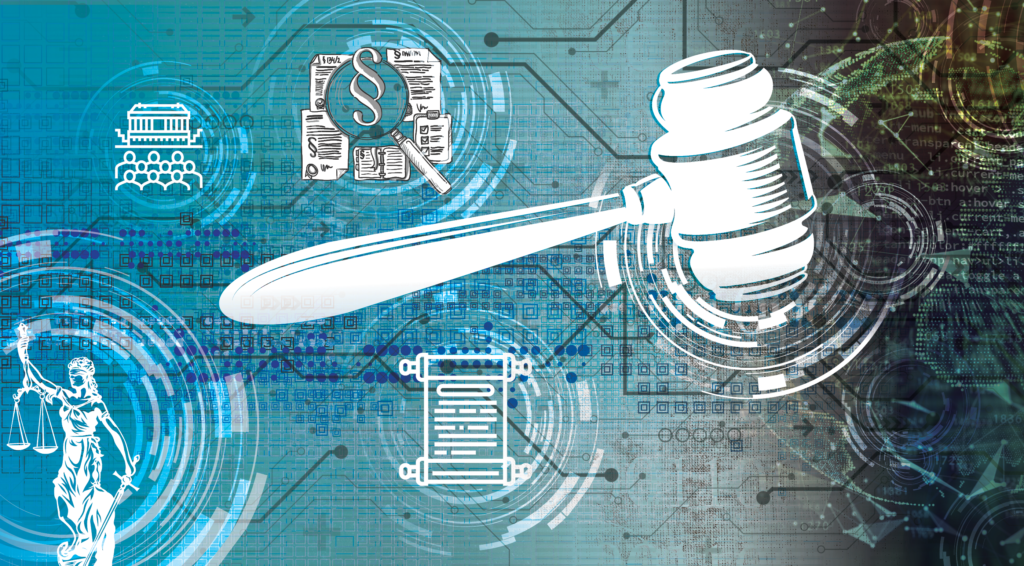
When COVID-19 struck the United States in January of 2020, every industry in the United States (and, really, the world) was shaken. It forced everything from mom-and-pop restaurants to the largest law firms to send employees home, left to their own devices to figure out how to run a business from miles away. This problem was particularly evident for those in the legal industry. As the pandemic continued into April, firms began to take drastic measures in response to decreased demand for legal services. Many law firms opted for pay cuts, in an attempt to save as many jobs as possible. However, some firms were still forced to lay off paralegals, attorneys, and other legal professionals[1].
While the demand for legal services subsided at the beginning of the pandemic, there was no decrease in the need for legal services[1]. After all, the pandemic provided a bevy of new legal questions that attorneys and clients alike had to ponder. So, while people weren’t speaking with lawyers during the height of the COVID-19 pandemic, a backlog of people needing legal help was growing quickly. Although business was down during the height of the pandemic, two attorneys, Nancy Rapoport and Joe Tiano Jr. predicted that the pandemic would only cause temporary struggles for the legal industry, while also forcing old-school firms to innovate.
Nancy is the Garman Turner Gordon Professor of Law at the William S. Boyd School of Law, University of Nevada, Las Vegas (UNLV), and Joe is a former lawyer turned businessman who founded Legal Decoder, a legal tech software that optimizes efficiency and pricing uncertainty. Together, they authored The Legal Industry’s Second Chance to Get it Right, which foresaw the legal industry’s comeback in February 2021, and they offered their insight on the future of law in an exclusive interview with AXEL.
How COVID Changed the Courtroom
“All of the stuff that we thought we knew about the practice of law has been wrong,” Rapoport says. Regarding the pandemic, she says, “it gave us a chance to rethink what a law practice should be.” While nearly every industry had to learn new things like Zoom meetings at the beginning of the pandemic, legal professionals faced unique challenges.
“The inability to read a witness’s or deponent’s body language … Doing it over Zoom is a challenge,” Tiano said. “You can’t read body language. It’s kind of hard to see inflections … It had to be an enormous hurdle for any lawyers who’ve been practicing the same way for decades.”
In addition to these remote depositions, the COVID-19 pandemic introduced new ethical dilemmas for legal professionals as well.
“There are now cases saying ‘Lawyers, stop texting your clients’ answers.'” says Rapoport. She describes a case where attorneys would communicate with witnesses during testimony through email, an impossible task to pull off in a physical courtroom. “No one does that because it’s unethical, but now we have to come up with all of these new ways of dealing with court and mediations, bringing people into separate rooms, dealing with witnesses.”
The Legal Industry’s New Challenges
Even before COVID-19, some observers predicted a radical change in how firms charge their clients[2]. For years, law firms big and small have used the “Billable Hour” model, a simple formula where a firm charges the client a certain cost per hour. Put simply, “[the billable hour] is the economic model upon which a law firm operates,” Tiano says.
After the pandemic hit and the demand for legal services dropped, many predicted that this radical change would finally occur. However, the industry-wide shift to alternative pricing agreements never came, even with the massively decreased demand for legal services at the beginning of the pandemic. But why didn’t alternative pricing become the norm, especially in a time as volatile and tumultuous as the pandemic? As Rapoport humorously puts it, “the billable hour is easy for lawyers because we’re not good at math.”
But just because it’s the most common pricing agreement doesn’t mean it’s the most efficient. “If we used data and we figured out other ways to value delivery of services, we’d all be better off,” Rapoport says. “[The billable hour model] encourages piling on of work, and it encourages slow work, neither of which a good lawyer should want to do. But if that’s the reward system, it’s very hard to break away from that. I would love to see people use data better, to rethink how they adjust the value to clients.” As Tiano succinctly puts it, “there’s a fallacy that every hour is equal in value.”
In addition to the continued use of the billable hour, law firms also face new challenges related to the rise of at-home work. “One of our biggest worries is how the newest professionals are going to get trained and socialized,” Rapoport says. A common problem among many offices since the pandemic, the lack of socialization for new employees can affect everything from office camaraderie to firm loyalty. And with at-home work becoming more and more normalized, these anxieties that firms and businesses face are unlikely to go away any time soon.
Finally, as the pandemic wanes and legal demand increases, law firms face a unique problem: “One of the biggest challenges that firms are having today is keeping their personnel, because they have too much work,” Tiano says. Although the legal industry started to bounce back when COVID vaccines became readily available, the industry soon came across new problems. The sheer amount of work has caused firms to lose personnel, risking the continuation of the legal industry’s comeback after COVID-19.
Legal Tech: Tool or Replacement?
Rapoport and Tiano see the benefits of legal software as complementary, but are skeptical about the technology replacing skilled lawyers regarding the ever-growing legal tech industry. As Rapoport says, “there are some things that computers are better at than lawyers … They can do things all day long in nanoseconds.” There is no shame in using the tools available to lawyers, especially if it helps increase efficiency. However, Rapoport warns that “if we’re not careful about how we use technology, we’re going to create a generation of untrained professionals who will become senior without knowing how to do things.”
“We’ve got to make sure technology augments what lawyers do, rather than replacing the skills that lawyers uniquely bring to the table,” Tiano says. “It’s very difficult to counsel a client from a legal, psychological perspective if you’re a piece of software.”
However, just because Rapoport and Tiano see legal tech as a complementary tool for quality attorneys does not mean that technology won’t replace second-rate lawyers. Rapoport warns: “For lawyers who are good counselors, there’s no software in the world that replaces that. For lawyers that fill in the blanks, their days are numbered.”
The Future of Law
Legal tech is unlikely to replace every lawyer any time soon. As Tiano says, “I don’t see technology replacing lawyers. I see it amplifying what lawyers can do and supplementing their processes.” But just because your next traffic court lawyer is unlikely to be a software program doesn’t mean legal tech can’t help lawyers increase efficiency. Legal tech saves firms and clients both time and money. It’s a valuable tool that, when used correctly, can help clients and firms in a myriad of ways.
[1] Wittenberg, Daniel. “The Pandemic’s Dramatic Effect on the Business of Law.” Americanbar.org. American Bar Association, October 28, 2020. https://www.americanbar.org/groups/litigation/publications/litigation-news/business-litigation/the-pandemics-dramatic-effect-the-business-law/
[2] Ambrogi, Bob. “Guest Post: Beating the Alternative – Why the Billable Hour Is the Truest Representation of Cost.” LawSites, August 25, 2021. https://www.lawsitesblog.com/2021/08/guest-post-beating-the-alternative-why-the-billable-hour-is-the-truest-representation-of-cost.html
